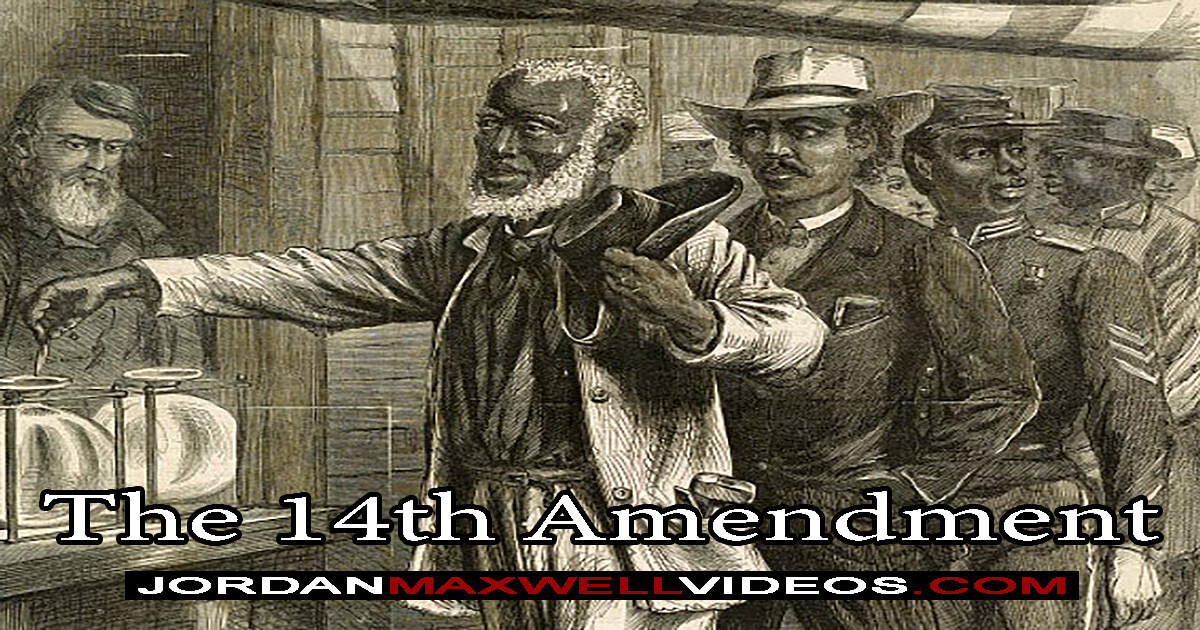
The 14th Amendment
To fully grasp its implications, one must consider the historical context of Reconstruction, the process used to secure its approval, and the long-term effects it continues to produce in law and governance.
Historical Context: Post-Civil War America
After the Civil War ended in 1865, the United States faced deep political, economic, and social fractures. The Union’s victory gave Congress — dominated by Radical Republicans — the ability to impose sweeping changes on the Southern states. Consequently, the Reconstruction Acts of 1867 placed the South under military rule, required new state constitutions, and demanded the ratification of certain constitutional amendments as a condition for rejoining the Union [U.S. Statutes at Large, 1867].
In this tense climate, Congress proposed the 14th Amendment in June 1866. It introduced new definitions of citizenship, removed rights from many former Confederates, and granted Congress broad enforcement powers. Yet the method of securing ratification sparked ongoing controversy that persists more than 150 years later.
The Text of the 14th Amendment
“All persons born or naturalized in the United States, and subject to the jurisdiction thereof, are citizens of the United States and of the State wherein they reside.” — 14th Amendment, Section 1
Supporters often highlight this section as a guarantee of equal protection and due process. Nevertheless, critics point out that the phrase “subject to the jurisdiction thereof” may have been intentionally ambiguous, potentially creating a form of federal citizenship distinct from state citizenship under the original Constitution [McDonald, 1998]. Because of this ambiguity, legal debates surrounding its true meaning have never fully subsided.
Non-Ratification Claims
Several historians and constitutional researchers maintain that the 14th Amendment was not ratified in accordance with Article V of the Constitution. Their arguments center on three key points:
- Coercion of States: Southern states that initially rejected the amendment faced military governance until they agreed to ratify it [Dyer, 1999].
- Replacement of State Governments: Federal military authorities replaced elected state governments with provisional ones that supported the amendment.
- Legislative Purges: Legislatures expelled dissenting members to secure enough votes for ratification.
Because of these actions, many believe the process violated the constitutional requirement for free and voluntary consent by the states.
Impact on Citizenship
Before the amendment, citizenship primarily existed at the state level, with the federal government playing a limited role. The 14th Amendment, however, created a second form of citizenship — “U.S. citizenship” — with its own set of rights and obligations. As a result, some legal scholars argue that Americans transitioned from being sovereign state citizens to subjects under federal jurisdiction [Adams, 2004]. Consequently, the amendment altered the legal relationship between citizens and the federal government in ways that continue to shape policy and governance.
Shift from Common Law to Statutory Jurisdiction
Through its equal protection and due process clauses, the amendment expanded the scope of federal judicial power. Courts have repeatedly used it to override state laws and long-standing common law principles. While proponents see this as a safeguard against injustice, critics believe it undermines state sovereignty and the balance of power intended by the Constitution’s framers [Marshall, 2010]. Therefore, it stands as a central example of how constitutional interpretation can reshape a nation’s legal framework.
Effects on Modern Systems
The 14th Amendment’s influence extends far beyond its original post-war context. In fact, it has served as the foundation for numerous landmark Supreme Court decisions, including:
- Brown v. Board of Education (1954) — Ordering the desegregation of public schools.
- Roe v. Wade (1973) — Establishing a constitutional right to privacy in matters of abortion.
- Bush v. Gore (2000) — Applying equal protection principles in a presidential election recount.
Moreover, the amendment influences corporate personhood, voting rights, taxation, and the growth of federal agencies. As a result, it continues to act as a key driver of federal authority in modern governance.
Conclusion
The 14th Amendment remains one of the most debated constitutional provisions in American history. Whether viewed as a monumental step for civil rights or as a forced redefinition of citizenship and state sovereignty, its impact cannot be overstated. Consequently, anyone seeking to understand the transformation of the American republic into its current federal system must examine both the official narrative and the persistent claims of non-ratification.
By studying this amendment’s history and implications, citizens can make informed judgments about its role in shaping the modern United States and the ongoing tension between federal authority and individual liberty.
Own The complete 27-DVD collection
A comprehensive journey through Jordan Maxwell’s research and revelations.

Secure your copy today for just $399. On Sale Buy Now!
Jordan Maxwell YouTube Videos | Jordan Maxwell: Wikipedia | Jordan Maxwell 27 DVD Collection





